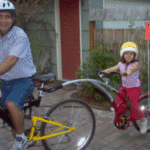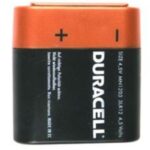So you have a bicycle and you’re thinking about adding a motor to it – which would allow you to go for longer rides at a time and conserve on your energy – especially on those sweltering summer days. But where do you start? This column tells you how to motorize your bicycle. Sam Wonderly of Electroportal.com, offers pertinent information about how to motorize a bicycle. Readers should check for up-to-date information before considering investments.
Consider an Option
Our $700 Charger bike offers more value than any kit we can recommend at this time. The Charger bike was designed to provide the maximum range and functionality on hills and in wind, given only affordable battery technology available today (sealed lead acid). Though Nickel Metal Hydride, Nickel Zinc, and Lithium Ion are coming down in price, they are significantly more expensive and it is difficult to justify $400 to $500 for a battery set with charger, compared with $100 to $150. Ultimately, the price of these lighter weight batteries will drop, and they will be used more on bikes.
How Long It Would Take a Novice to Motorize a Bicycle
If someone is mechanically inclined and feels comfortable with tools (as many cyclists become after owning a bike), the add-on kits can take from two to four hours to install. Our front wheel hub motors, if purchased with a complete front wheel assembly (rather than with spokes to convert an existing wheel), require a minimum effort.
Simply swap the existing front wheel for our hub motor wheel. Exchange the right-hand grip for a twist grip speed controller. Attach a controller “magnetic pickup sensor” on the front fork to read the rim magnets.
Attach the electric supply controller box to the frame. Plug the wires in the proper receptacles. Using nylon “zip ties,” attach the wires to the frame. The battery case can either ride in a rear cargo basket that usually comes with tricycles, or a separate rear rack can be used for a bicycle. For those who want a better weight distribution, we recommend a pannier bag attached to the rack, or a frame bag attached to the top tube of the bicycle frame.
We offer rear wheel drive motors for customers who require the added traction. Our kits are available with a disk brake option, which I recommend for areas with steep hills or long grades, that tend to make rim pad brakes overheat. The disk brake option requires the disk to be installed, plus the brake caliper.
The Cost of Motorizing a Bicycle
Anything other than crude motors with a roller the operator manually activates to press onto a tire ($150 to $450) will cost between $350 and $1,000 – higher depending on power, type of batteries, charging unit, brakes, and so forth. With an electric kit, you usually get what you pay for, though you can expect to pay more for European, Japanese and American made than for Taiwanese, Chinese and Indian made.
Though the European, Japanese and U.S. made tend to be the most expensive, many people don’t mind spending the extra money for something that should last many years, and replace their car for many applications. As more U.S. manufacturers partner with Asian firms to remain competitive, my opinion is this combination offers the best value for most customers.
Besides power and range, some bikes (and kits) have batteries that stand up much better than others. There are also electronics that may be cheaper, but do not prevent the motor from overheating and are more prone to failure from sun and moisture than others. You get what you pay for. To summarize, a good electric bike should cost between $900 and $2,000. A good electric kit should cost between $450 and $1,000.
Types of Engines Available
There is no reason to consider gas engines unless the rider has a range requirement of 30 miles or more. Even then, depending on the terrain, it is possible to extend the assisted driving range to 40 or more, as with our Charger bikes. Electric motors consisting of rollers that press on tires are crude motors. These are the least expensive, but wear out tires, and slip with wet road conditions. They have mechanical levers that must be adjusted for proper pressure.
Motors with direct drive chains that tie directly into the front or rear wheel axle are an improvement over motors with a pressure roller, but most do not have a way to connect with the pedal gearing, so they are stuck in one lower gear. This means they work better in the slower speeds and when first starting out, but once the bike moves at 10 to 15 miles per hour, the motor does not move the wheel fast enough to make as much difference as a motor tied to the pedal gearing.
Motors with direct drive chains or worm gears that connect with the pedal gearing are the most functional because they are as effective in first gear as they are in seventh gear – just like a car motor tied to a transmission. Our Charger bike is this type, and is unique in that it ties into a seven-speed internal hub transmission with a second chain.
The Shimano Nexus 7 allows shifting at a standstill, as well as while moving, which is important, but lacking on most electric bikes. Electric bikes are heavier than regular bikes and you don’t want to be stuck in higher gear at a stop sign unless you have something like a Nexus internal hub transmission.
Motors that are built into the wheel’s hub have many advantages, though they are like motors with direct drive chains in that the motor does not take advantage of the pedal gearing. For tricycles and slower moving pedal cycles, these are quite adequate, because they offer good power and are easier to install than a mid mount motor tied to the pedal transmission.
Other than that, there are brush motors and synchronous, brushless, permanent magnet (PM) motors. There is a controversy over which are better for an e-bike application, since brushes rarely wear out. If they do, they can always be replaced. However, PM motors tend to be more efficient and compact, though more expensive. With sophisticated pulse modulated controllers that can be designed to alter torque as well as speed, PM motors will win out.
Basic Tools Necessary to Motorize a Bicycle
Basic bicycle tools needed are an adjustable wrench, pliers, “4 in 1” screw drivers, Allen wrench set, utility knife and so forth (metric usually). Combination open and box wrench sets, diagonal cutters, ratchet with socket wrench set, spoke wrench, and other tools could also come in handy, but may not be necessary.
A Few Words on Electric and Gas Motors
Any electric or gas motor can be adapted to use on a bike or tricycle. Even a high power hand drill or electric saw has been used for this application, quite successfully – and for the creative, inexpensively.
For those who value their time and prefer ready made solutions, a kit provides a motor designed specifically for a bike, plus the electronic controller, speed controller, battery pack, charging unit, mounting hardware, and so forth. Specific gas motors for bikes are offered by Mitsubishi, Honda, Solex, and others.


